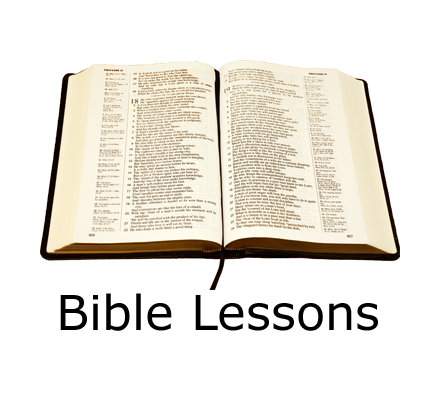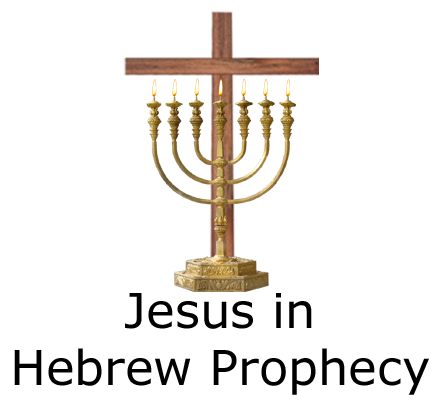Series on The Nature of Scripture
“Nag Hammadi Scrolls, Marcion, & Canonizing the Bible”
In the second century A.D. (140 to 180 A.D.), there was a group calling themselves Christians who believed that the apostles did not have the right perspective. They also believed that the church was wrong in believing that there were only four legitimate gospel accounts (Matthew, Mark, Luke, & John). They thought that the church wasn’t recognizing all the gospels that they should recognize. They held that there were other gospel writings of the apostles that ought to be read and held up as being in common with the Old Testament.
The Nag Hammadi writings, which were found in the desert of Egypt near the town of Nag Hammadi in the 1940’s, are copies of these other gospel accounts from the second century A.D. They were composed by Gnostics originally in the Greek language but had been translated into the Coptic language, which was a mixture of Egyptian hieroglyphics and Greek characters. What makes these writings so dangerous is their titles, such as “The Secret Book of James,” “The Gospel of Truth,” “The Treatise on the Resurrection,” “The Secret Book of John,” “The Gospel of Thomas,” “The Gospel of Philip,” “On the Origin of the World,” “The Book of Thomas,” “The Wisdom of Jesus Christ,” “The Revelation of Paul,” “The First Revelation of James,” “The Second Revelation of James,” “The Revelation of Adam,” “The Acts of Peter and the Twelve Apostles,” “The Revelation of Peter,” “The Letter of Peter to Philip,” “The Gospel of Mary,” “The Act of Peter,” “The Gospel of the Hebrews,” “The Letter of Paul to Peter,” and “The Gospel of Judas.”
The Gnostics argued that you should not limit the number of gospels in the canon to four. These writings, available in English, are seducing an entire generation of young people and those who have just attained some maturity as adults as being an alternate collection of Christian writings. So, in the second century we had the Gnostics with which the church had to contend in considering what books should be included along with the Old Testament as divinely inspired scripture.
Then on the other hand, also in the second century, we have a man named Marcion. He attracted a group of followers known as Marcionites. He and his followers were based in Rome along with a large group of Gnostics. Marcion argued that, rather than having too few books in the New Testament, too many had been added in. Marcion advocated throwing out all of the Old Testament scriptures. Marcion held that the God of the Old Testament was a God of wrath and judgment and not a God of grace and love and not the Father of Jesus Christ. He argued that the church needed to get rid of the writings of the Jews. He was the first and utter anti-Semitic. He discounted the entire Jewish religion as being false. He also wanted to cut out everything in the New Testament writings that sounded too much like the Old Testament. When he had finished cutting up the New Testament, he ended up with nothing left but a carefully edited version of Luke and ten of Paul’s epistles. Marcion’s version of Christianity had no root in the Old Testament or the religion of the Jews. Marcion argued that his was the first New Testament canon.
In this atmosphere of one group yelling for more to be added while another yelled for less, people in the church wondered what the canon of scripture ought to be.
A lot can be said against Marcion, including that he was a dirty, low down anti-Semite but one thing that you cannot say against Marcion is that he lacked integrity; because he walked and lived in continuity with his deepest convictions. Which is more than many Christians can say of themselves. How many Christians can say that they read the Old Testament for spiritual benefit with any frequency? How many can say that God has given them any of the Old Testament books for their edification and Christian walk? Marcion, true to his beliefs, got rid of the Old Testament; but we, having kept them in the canon, just never read them.
What do you do about Isaiah 63:1-6, in which the Lord trampled the heathen nations in wrath and anger, spattering His garments with their blood? Do you acknowledge and praise Him or do you try to hide Him? Are you careful about the vision of the living God you provide to the unbelieving world? Do you like the God of John 3:16 better than the God of Isaiah 63? Or do you emphasize the fact that God is a God who despises sin to the point of trampling the city of sinners until their blood runs freely and spatters His garments? The God in Isaiah 63:3 is the Lord Jesus Christ and He will show up in Revelation 19, at the end of the ages, wearing a white garment again and to His side will be strapped a sword that He will draw and use to decimate the sinners and, when He is finished, He will exit that battle covered with the gore of those who stood against Him. Do you love that God? The God of Isaiah 63 is the God who showed up at the crucifixion, except that this time He stomped upon His only begotten Son.
Marcion didn’t like the portrayal of God that appeared in Isaiah 63:3, so he got rid of it. You have not been given permission to paint a portrait of God the way you would like to picture Him. You must paint a picture of God in accordance with how God has revealed Himself, and part of the way in which God has revealed Himself is in Isaiah 63:3. Jonathan Edwards used Isaiah 63:3 as a key text in his famous sermon during the first great awakening in the early period of this country.
What do you do with the Caananite wars, in which God ordered the Israelites to destroy all the flocks of the Caananites and to put to death all the Caananite men, women, and children, even the women who were with child? What do you do with the God who commands the death of the unborn? Marcion hated and despised Him to the point that he just got rid of Him.
The church responded to Marcion by saying that the entire Old Testament, without division and without preference, must be included in the Christian canon of scripture because we are not given permission to paint a portrait of God after our own image or according to our preferences. We are responsible to view God, to love God, to obey God, to submit to God according to the portrayal that He Himself presented of Himself. So who do you love? The God who is or the God that you created?
Paul commands Timothy to preach the whole counsel of God. He is commanded to preach the God of the Caananite wars, the God of John 3:16, the God of Isaiah 63, and the God of Romans 5. (2 Timothy 3:16)
Jesus Christ taught the Old Testament. Jesus Christ taught Himself from the Old Testament. Jesus Christ brought the entire Old Testament with Him into the temple and read from it.
The entire Old Testament, without mixture or any omission, is to be understood as the fundamental aspect of the church’s scripture.
The reason why the church accepted the entire Old Testament into the canon is because it was Jesus’ book. So that solved the question of the Old Testament.
Now what do we do with the Gnostics who were declaring, “Add, add, add?” Once the question of the Old Testament had been settled, the question about what to include in the New Testament became easier.
for Inclusion and Exclusion of Books from the Canon
2. Every New Testament book must satisfy apostolicity: it has to be written by an apostle or by the disciple of an apostle.
3. The book has to be something with which the entire Christian world resonates. In other words it has to satisfy universality. Nothing gets into the canon that only one Christian community likes. It has to be something for which the Spirit has brought the entire Christian world into conviction. It has to be a book, loved, affirmed, and embraced by the entire Christian world.
4. No gospel account or book is to be accepted into the canon that does not have at its heart the incarnation and the bloody, crucifixion of Jesus Christ, resulting in His death. Gnostics taught that Jesus Christ was not really incarnated, that He did not really become flesh, He only seemed to be, and He did not really die from a fleshly slaughter on the cross. They were embarrassed by the entire idea of a God who would become human and who would suffer the ultimate humiliation of death on the cross. This is why the Lord’s Supper formed such a fundamental aspect of the church’s worship in the early centuries. Because the Lord’s Supper is that which we gather around and proclaim that our Lord is an incarnate, slaughtered, bloody Lord. We eat the bread which is symbolic of His slain body; we drink the wine which is symbolic of His dripping blood; and we do this as a common confession of the center of our faith.
The Bible is the Old Testament, the text of Jesus Christ, and the scriptures written down by the apostles and the disciples of the apostles, to whom the Holy Spirit came and whom Jesus taught, whose writings did not originate with themselves but from God. What they wrote was not the word of men but of God. What they wrote was produced through them by the third Person of the Trinity, the Holy Spirit. Whether Old Testament or New Testament, it is the word of God.










